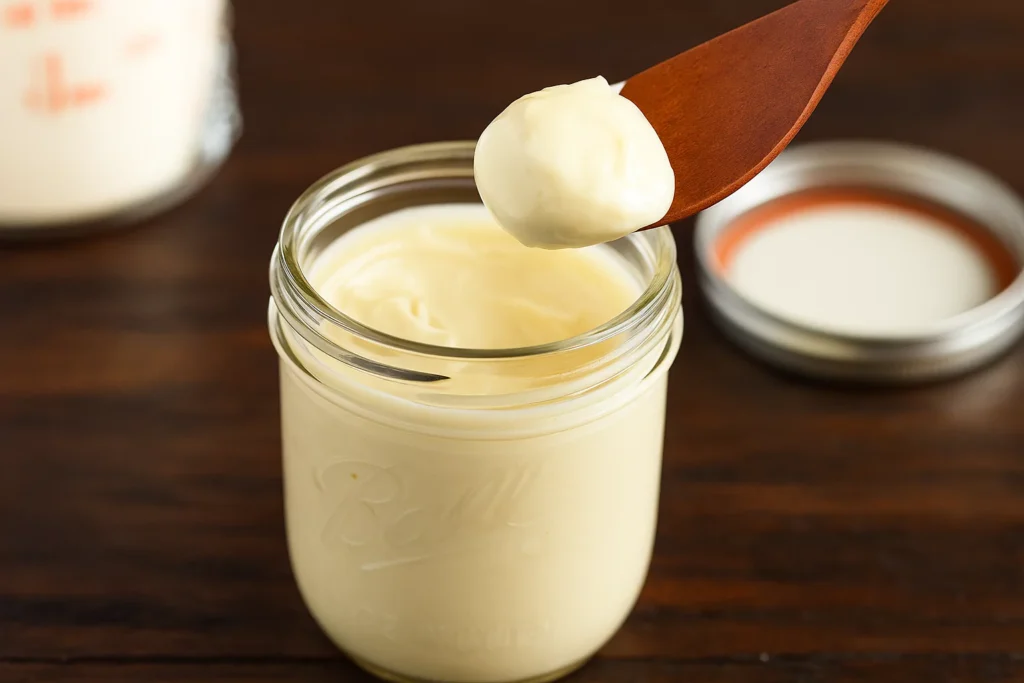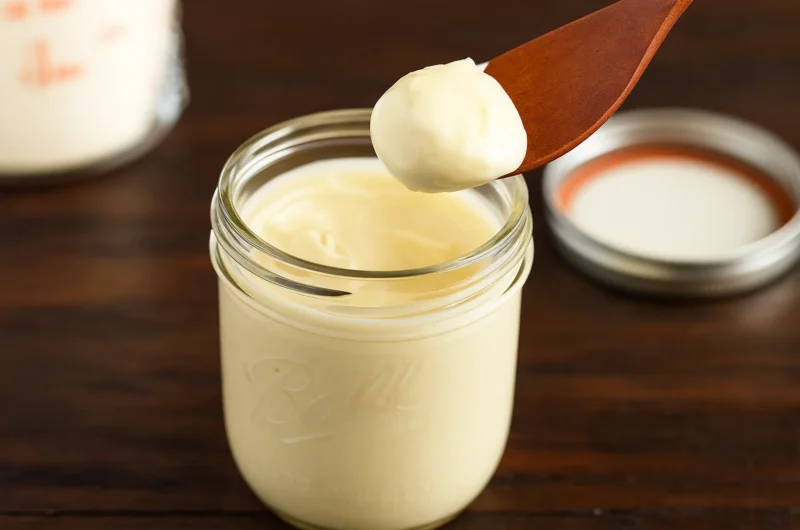Have you ever wondered why Japanese mayonnaise tastes better than regular mayo? It’s creamier, tangier, and somehow… more delicious! That rich, savory flavor comes from a unique blend of simple ingredients and a technique that anyone can master. In this guide, we’ll show you how to make authentic Japanese Mayonnaise (also known as Kewpie Mayo) right in your own kitchen.
Jump to Recipe Print Recipe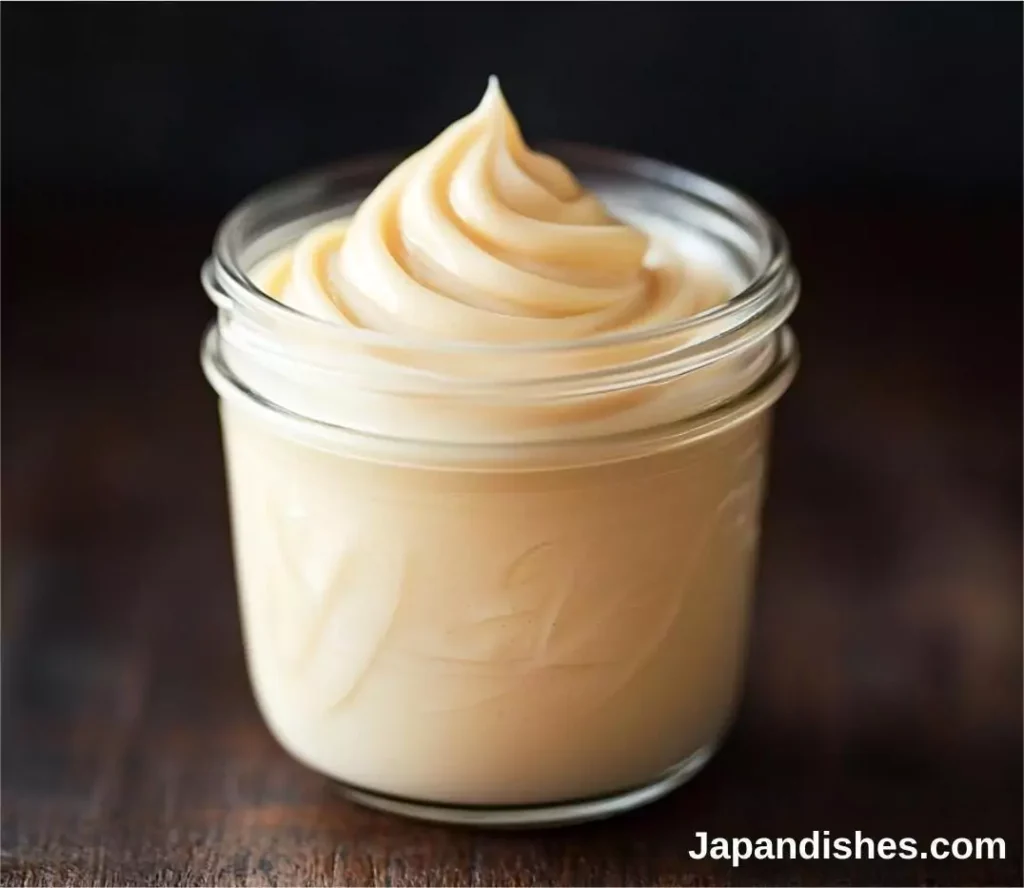
Japanese Mayonnaise (マヨネーズ) has become a kitchen essential in homes across Japan and for good reason! Known as Kewpie Mayo, this beloved condiment is famous for its ultra-creamy texture, subtle sweetness, and signature umami kick. The best part? You can make this irresistible spread at home using just a handful of simple, wholesome ingredients. It’s richer, smoother, and more flavorful than anything you’d find in a bottle!
🍱 Curious about other Japanese condiments? Don’t miss our easy guides for Homemade Tonjiru Pork and Vegetable Miso Soup and Veggie Tempura (野菜の天ぷら) to round out your flavor arsenal.
Table of Contents
Why This Recipe Stands Out
Homemade Japanese Mayonnaise is a total game changer. Here’s why:
- Time Required: Just 10 minutes!
- Skill Level: Super easy (even beginners can do it!)
- Why it’s Special: It uses only egg yolks, giving it a luxurious texture. Plus, ingredients like dashi powder and rice vinegar give it that umami punch you won’t find in Western mayo.
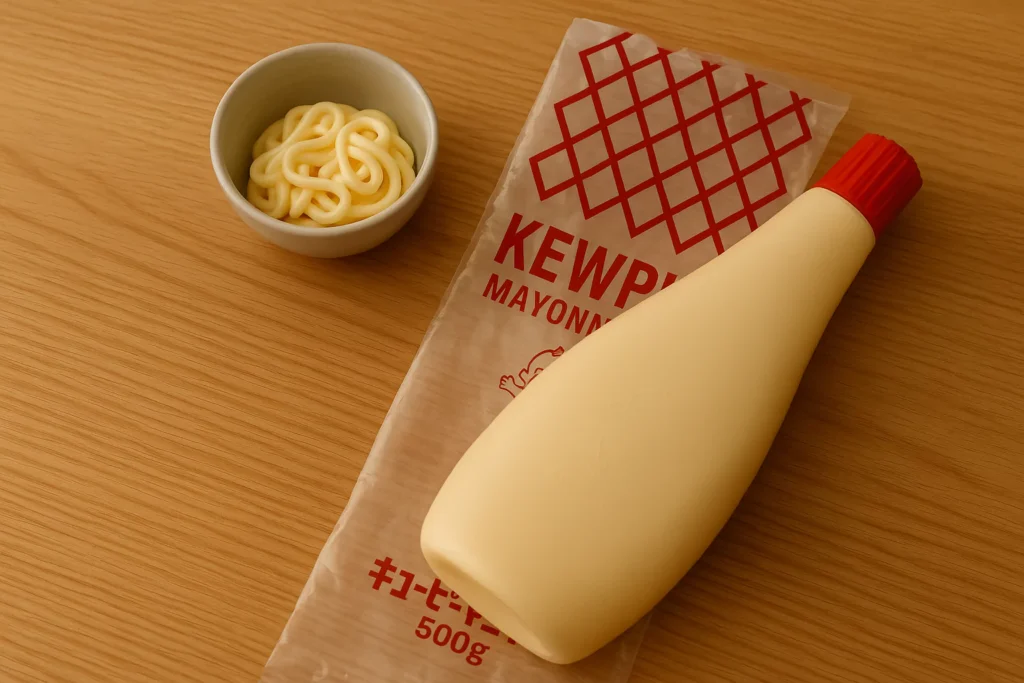
Essential Ingredients
To make Japanese Mayonnaise, you only need a few pantry staples:
- 2 Pasteurized Egg Yolks (room temperature) – For a rich, creamy texture
- 1½ Cups Neutral Oil (canola, safflower, grapeseed) – Blends smoothly
- 2 tsp Dijon Mustard Enhances flavor and helps the mixture stay smooth.
- 1 tsp Kosher Salt – Enhances flavor
- 2 tsp Sugar – Balances the tanginess
- ½ tsp Dashi Powder – The umami magic ingredient
- 2 Tbsp Rice Vinegar (unseasoned) – Mild acidity with sweetness
- 4 tsp Lemon Juice – Brightens the mayo
Substitutions & Variations:
- No dashi? Use a pinch of MSG or leave it out.
- No Dijon? Yellow mustard works, though flavor may vary.
- Prefer a vegan version? Try aquafaba instead of eggs!
Step-by-Step Instructions
Step 1: Prep Your Tools
- Use a small food processor, blender, or immersion blender.
- Ensure all ingredients are at room temperature.
Step 2: Blend the Base
- Add egg yolks and Dijon mustard to your blender.
- Blend for 20 seconds until smooth.
Step 3: Emulsify Slowly
- With the blender running, slowly drizzle in one-third of the oil.
- Add salt, sugar, and dashi powder.
- Blend again for a few seconds.
Step 4: Continue Emulsifying
- Add the second third of the oil slowly.
- Pour in rice vinegar and lemon juice.
- Finish with the remaining oil, blending until thick and creamy.

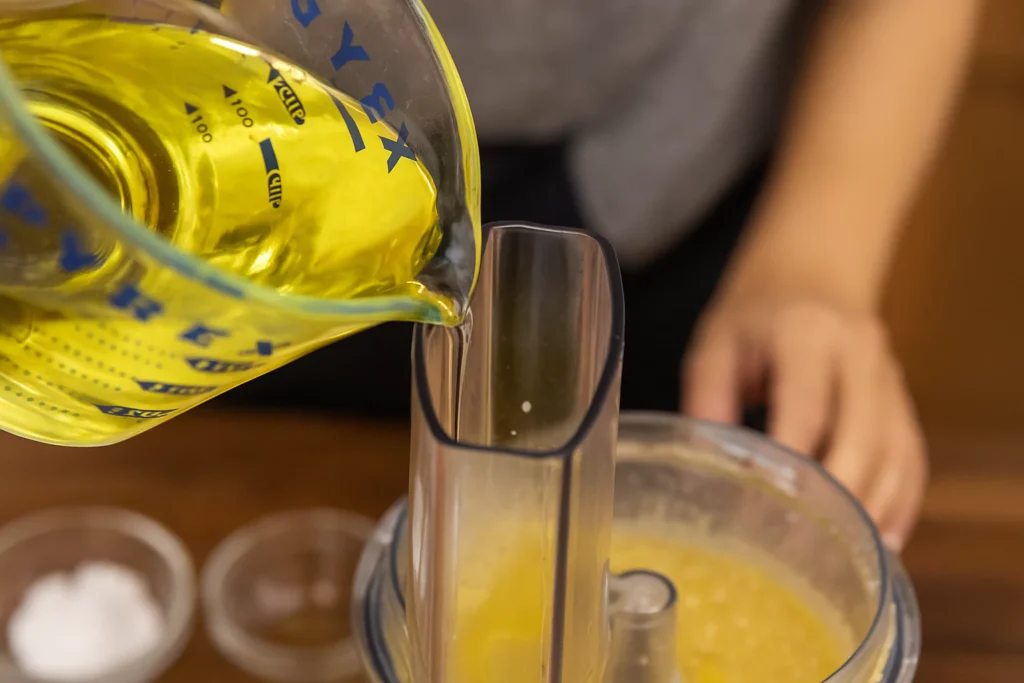
Step 5: Taste and Adjust
- Want it tangier? Add more lemon juice.
- Prefer it sweeter? Add an extra pinch of sugar.
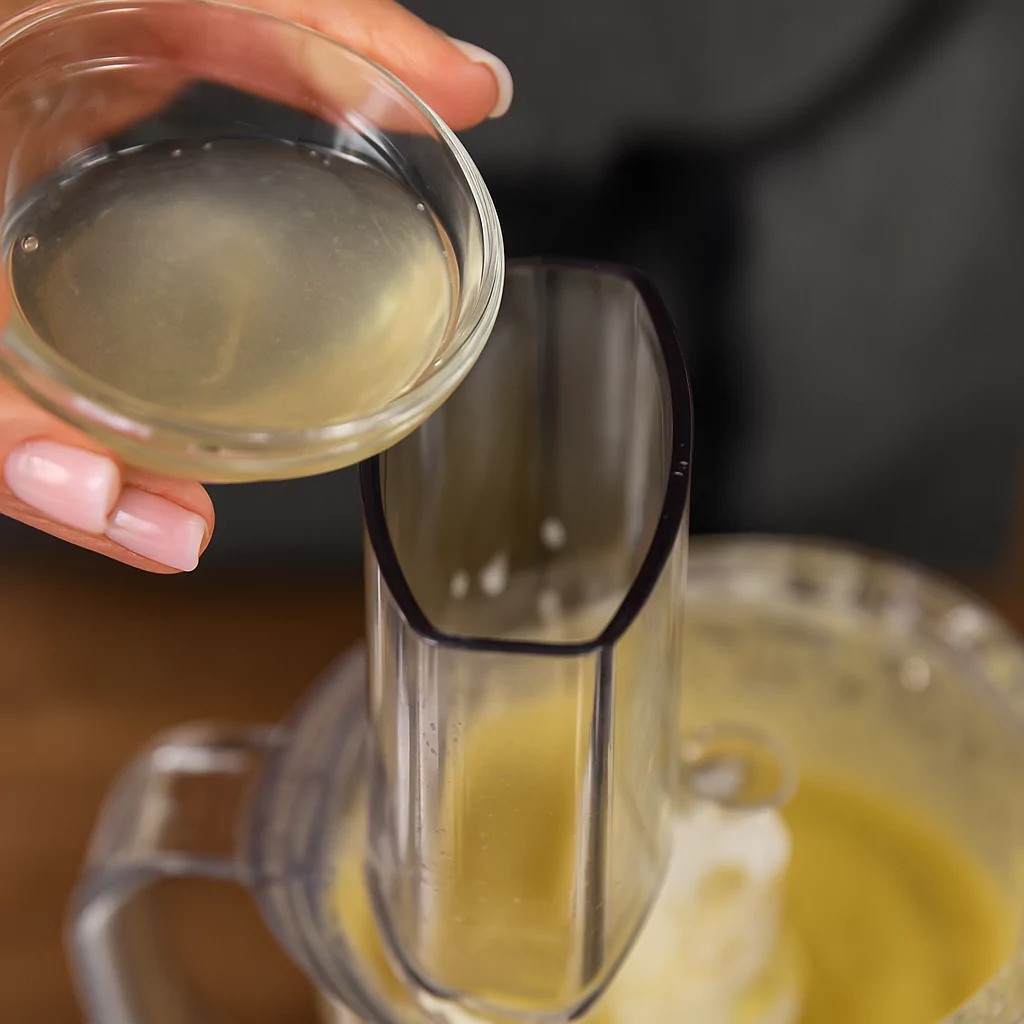
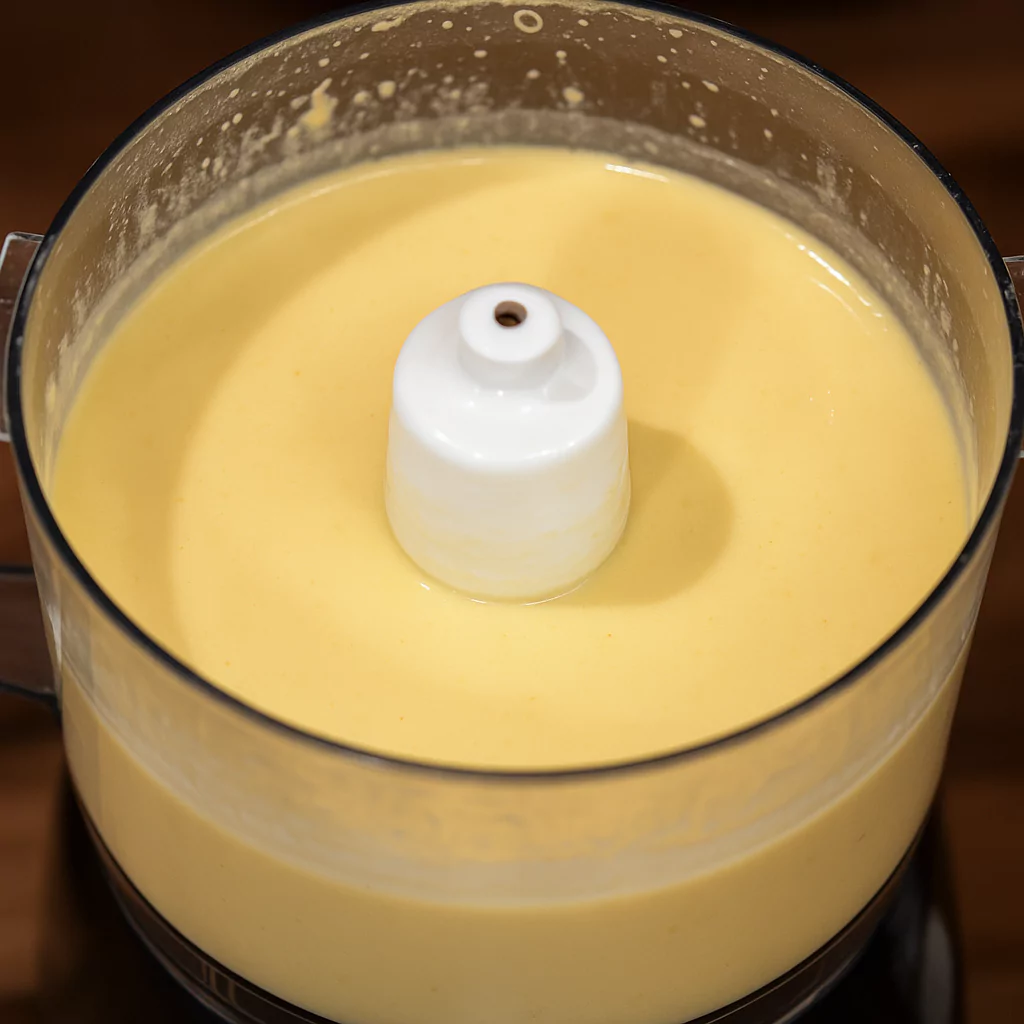
Putting It All Together
Once your Kewpie Mayo is done, transfer it to a clean glass jar or squeeze bottle. For a traditional look, use a recycled Kewpie bottle!
Presentation Tips:
- Add a touch of paprika on top for a colorful finish.
- Use it as a zig-zag topping over sushi rolls or okonomiyaki.
Hana’s Recipe Tips
Storage & Make-Ahead Tips
- Fridge Life: Store in an airtight container for up to 4 days.
- Make Ahead: You can prep the ingredients and store separately, then blend when ready.
- Avoid Freezing: The emulsion will break.
Creative Recipe Variations
- Spicy Kewpie: Mix in sriracha or wasabi for a spicy twist.
- Garlic Mayo: Add roasted garlic for a rich, savory depth.
- Yuzu Mayo: Swap lemon juice for yuzu juice to add a citrusy flair.
- Smoked Mayo: A dash of smoked paprika turns it into a BBQ-friendly condiment.
If you’re craving a comforting and hearty Japanese soup to accompany your homemade Japanese Mayonnaise, consider trying Tonjiru (豚汁), also known as Butajiru. This traditional pork and vegetable miso soup combines thinly sliced pork belly with a variety of root vegetables like daikon, carrot, and burdock root, all simmered in a savory miso-infused dashi broth. The rich umami flavors of Tonjiru make it a perfect pairing with dishes that feature Kewpie Mayo, adding depth and warmth to your meal. For a detailed recipe and step-by-step instructions, visit Japan Dishes’ Tonjiru Recipe
Your Easy Guide to Making Japanese Mayonnaise (Kewpie) マヨネーズ
Course: AppetizersCuisine: JapaneseDifficulty: Easy16
servings10
minutes94
kcalThis homemade Japanese Mayonnaise (Kewpie Mayo) is rich, creamy, and full of umami flavor. Made in just 10 minutes with simple ingredients, it’s perfect for sushi, salads, and sandwiches!
Ingredients
2 pasteurized egg yolks (room temperature)
1½ cups neutral oil (canola, safflower, or grapeseed)
2 tsp Dijon mustard
1 tsp kosher salt
2 tsp sugar
½ tsp dashi powder
2 tbsp unseasoned rice vinegar
4 tsp lemon juice
Directions
- Add the egg yolks and Dijon mustard to a blender or small food processor. Blend for about 20 seconds until well combined.
- With the machine running, slowly drizzle in one-third of the oil in a thin stream to begin the emulsification process.
- Add salt, sugar, and dashi powder. Blend again briefly.
- Slowly add the second third of the oil while blending.
- Add rice vinegar and lemon juice, then pour in the final third of the oil. Blend until the mixture becomes thick and creamy.
- Taste and adjust flavor with more sugar, salt, or lemon juice if needed.
Notes
- For best results, use room-temperature ingredients to avoid breaking the emulsion.
Keep it refrigerated in a sealed container and use within 4 days.
Avoid using extra virgin olive oil, as it can affect taste and texture.
You can substitute dashi powder with a pinch of MSG or skip it for a milder flavor.
Final Thoughts
Making your own Japanese Mayonnaise is fun, quick, and absolutely rewarding. You get full control over flavor, quality, and freshness. Once you try it, you might never go back to store-bought again!
So grab your blender and give this Kewpie Mayo recipe a shot—it could be your new kitchen favorite!
FAQs About Japanese Mayonnaise
1. Is Japanese Mayonnaise healthier than regular mayo?
It uses egg yolks only, which makes it richer. You can choose high-quality oils and control the sugar and salt.
2. Can I use olive oil instead of neutral oil?
It’s not recommended. Olive oil has a strong flavor that can overpower the mayo.
3. What is dashi powder and do I need it?
Dashi powder adds umami, but you can skip it if unavailable or use a tiny pinch of MSG instead.
4. My mayo didn’t thicken. What went wrong?
Make sure ingredients are room temperature and oil is added very slowly.
5. How do I use Kewpie Mayo?
Use it in sushi, sandwiches, potato salad, on top of grilled meat or even pizza!
If you’re exploring Osaka’s vibrant street food scene, indulging in authentic takoyaki is a must. These savory octopus-filled balls are a beloved local specialty, offering a crispy exterior and a soft, flavorful center. To discover the top spots serving this iconic dish, check out this guide to the Best Takoyaki in Osaka: Top 5 Must-Try Spots. Whether you’re a first-time visitor or a seasoned foodie, this list will lead you to the most delicious takoyaki experiences in the city.
